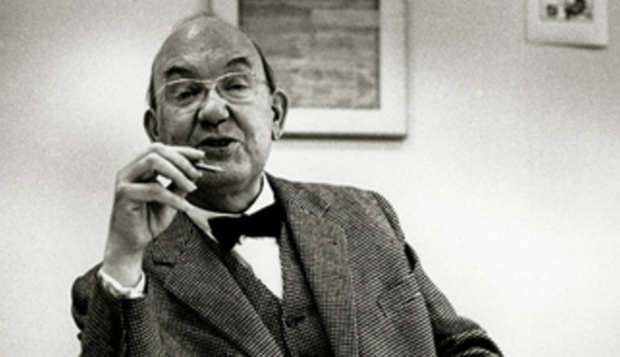
Jan Tschichold was a prominent twentieth century German typographer and book designer. He was a remarkable teacher and an author as well. He is best known for writing Die neue Typographie and Typographische Gestaltung which became standard textbooks for the next generation of typographers.
Born on April 2, 1902, Jan Tschichold grew up in Leipzig, Germany. His father was a provincial signwriter and trained in calligraphy. Tschichold’s rich artistic background and the calligraphic training he received from his father set him apart from his contemporary typographers. Since he didn’t receive any such formal fine art education, he felt more at home utilizing commercial paper stocks and used stock fonts instead of handmade papers and custom fonts which other typographers prioritized. Upon Hitler’s election in Germany, the Ministry of Culture required all designers to register themselves with the ministry. Also communist sympathizers were barred from attaining any teaching posts.
At the behest of Paul Renner, Tschichold succeeded to garner a teaching post in Munich. However, they were both denounced as cultural Bolshevists. In 1933, as Nazis rose to power, Tschichold and his wife were arrested. The Soviet posters found in his apartment during his arrest put him under scrutiny, based on the suspicion of his involvement with communists. Secret State Police of Nazis, The Gestapo, seized all of his books. Nonetheless, he found an opportunity to escape from the reign of terror in Germany as a policeman got him and his family a ticket for Switzerland. Except from his brief visits to Britain in 1937 and late 1940s, he remained settled in Switzerland till the end of his days.
In 1923, subsequent to his visit to the first Weimar Bauhaus exhibition, he converted to Modernist design principles. Tschichold soon became a strong advocate of Modernist design which he manifested through influential magazine supplement published in 1925. Two years later he held a personal exhibition showcasing Modernist design. Moreover, his magnum opus Die neue Typographie is testimonial of his support for Modernism. The book is considered a manifesto of modern design which reflects Tschichold’s opinion of application of different typefaces. He condemned all typefaces in his work, except sans-serif or more commonly known as Grotesk in Germany. He codified several of Modernist design rules and approved non-centered designs. He emphasized on the use of standardized paper sizes for all printed matter. He also explained the effective use of different sizes and weights of type in order to easily convey information.
In addition to that Tschichold wrote a series of practical manuals on the principles of Modernist typography. Those had a great influence on printers and ordinary workers in Germany. Notwithstanding the widespread popularity of Die neue Typographie, Tschichold gradually began to lose faith in his rigid beliefs from 1932 onwards. He moved back towards Classicism in print design as he accepted classical Roman typefaces for body-type. Soon after, he condemned his own book as being too extreme in its approved choice of typefaces. In fact, his opinion of Modernist design took a 360 degree turn as he openly condemned it in general for being too authoritative and inherently fascistic.
During his stay in England in late 1940s, he was requested by Penguin Books to redesign their paperbacks, thus he supervised the redesign of 500 books. Furthermore, Jan Tschichold wrote a guideline based on typographic and composition instructions for editors and compositors at Penguin, the Penguin Composition Rules. He passed away on August 11, 1974 in Locarno, Switzerland at the age of 72.

